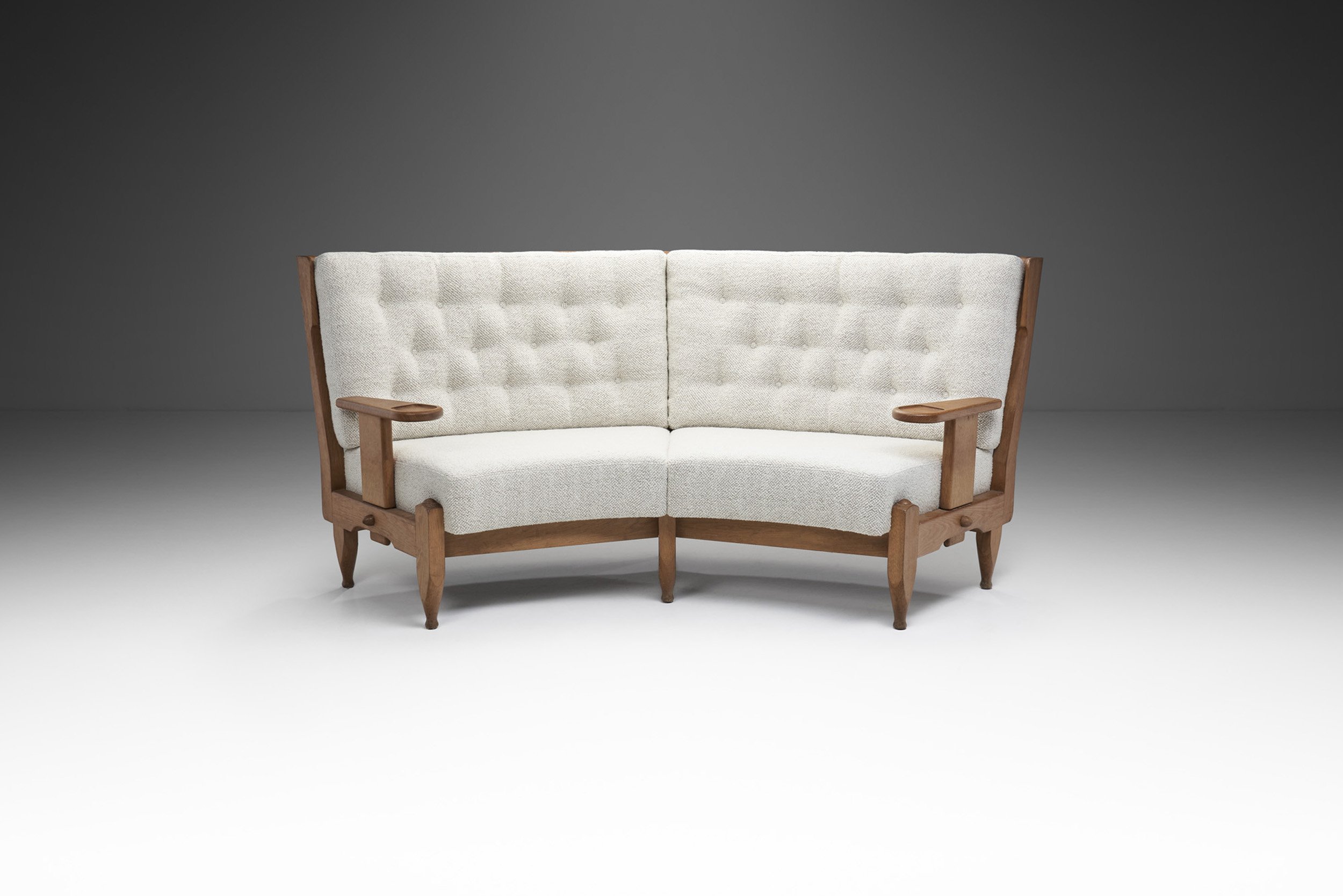Carl Malmsten "Fästfolket" Two-Seater Sofa for O.H. Sjögren, Sweden 1950s (sold)













Carl Malmsten "Fästfolket" Two-Seater Sofa for O.H. Sjögren, Sweden 1950s (sold)
This Carl Malmsten sofa is called exactly what ABBA was called before they changed their name: Fästfolket. In the past, an engaged couple were often referred to as 'fixed people' in Sweden.
This type of sofa is often referred to as a loveseat, from the idea that a couple can share it, sitting very close together. The name of this model may well be a reference to this. Swedish design can be productively explored along two axes: Carl Malmsten on one end, and Bruno Mathsson at the other. Carl Malmsten represents the more traditional axis, embracing industrialization less and favouring the ‘homely curviness’ instead. Sweeping curves with an organic impression and utmost quality: these are the main characteristics that define this sofa. Even as a young designer in the early 20th century, Carl Malmsten advocated artisanal furniture design based on local materials and traditions. “Break all edges thoroughly” was a frequent instruction on Carl Malmsten’s drawings and nature was his great source of inspiration, therefore sharp edges or corners can rarely be found in his designs. This model is no different, with round, outward curving edges on the back and arms, and a thick, cozy seat. These features greatly enhance the open and welcoming impression. The organicity of the design is not broken by ornamentation, instead the warm, mustard coloured upholstery is utilized to highlight the shape of the sofa. The piece is supported by slim, tapered legs made of solid wood with a stunning grain.
Although Carl Malmsten’s furniture was very much a product of the thoughts and ideals of the time, they have a timeless quality that makes them equally up-to-date and loved today. This Fästfolket sofa is just as lovely as its name suggests with that certain “Malmstenesque” that makes the designer’s pieces one-of-a-kind.
SOLD
Condition:
In good vintage condition. Wear consistent with age and use. The sofa has been reupholstered recently in a premium velour fabric. Each of our items can be re-upholstered by our in-house atelier in a fabric of choice. Please reach out for more information.
Dimensions:
55.9 in W x 32.28 in D x 27.75 in H; Seat height 18.11 in; Arm height 22.63 in
142 cm W x 82 cm D x 70.5 cm H; Seat height 46 cm; Arm height 57.5 cm
About the Designer:
Carl Malmsten (December 7, 1888 – August 13, 1972) was a Swedish furniture designer, architect, and educator born in Stockholm, Sweden. Malmsten's career took off when he won a competition in 1916 to design furniture for the Stockholm City Hall and shortly after, in 1917, he exhibited alongside well-known Swedish architects such as Gunnar Asplund and Uno Åhrén.
In the 1920s he was invited to furnish a room for the crown prince, Gustaf VI Adolf, and his wife Louise in Ulriksdal Palace. He was honoured with an inaugural Prince Eugen Medal for design in 1945. Already as a young designer in the early 20th century, Carl Malmsten advocated an artisanal furniture design based on local elements and traditions, available to a wide audience at a reasonable price.
Nature was Carl Malmsten's foremost teacher and source of inspiration. He conveyed his love of craftsmanship as a teacher in his own schools, at Olofskolan in Stockholm, Capellagården on Öland and the Carl Malmsten school on Lidingö, today a branch of Linköping University and one of the country's leading design colleges. As a debater, Malmsten stormed against functionalism, but in retrospect it can be seen that his ideas often coincided with the rational and frugal style ideals of function.
Malmsten has had a lasting influence on Swedish furniture design through the two schools he founded. Carl Malmsten spoke about the importance of tradition, craftsmanship, and the nation. His furniture was in many ways a product of the thoughts and ideals of the time, they have a timeless quality that makes them just as relevant and loved today. ~H.












